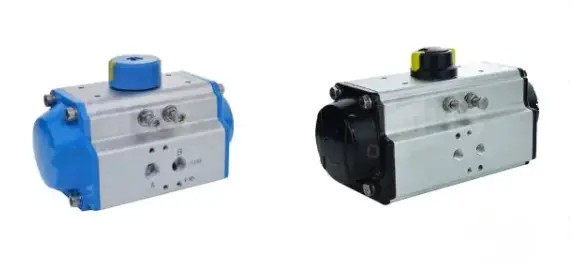


Maintenance Strategies for Pneumatic Control Valve Actuators
We are a leading control valve manufacturer in China, delivering high-performance valves and control actuators engineered to meet a wide range of industrial applications.
Pneumatic control valve actuators play a vital role in industrial automation by precisely regulating fluid flow, pressure, and temperature. Ensuring their reliable operation requires proper maintenance to minimize downtime and extend service life. This article explains the basics of pneumatic actuators and compares three key maintenance approaches: run-to-failure, preventive, and predictive maintenance.
Pneumatic valves use actuators controlled by positioners, which convert electrical (4–20 mA) or pneumatic (3–15 psig) signals into valve movement to regulate process variables accurately. Clean, dry air is essential for actuator function, as contaminants like moisture and oil can cause wear and reduce performance. Modern systems typically incorporate positioners for precise control, while some older valves rely on simpler diaphragm actuators without positioners.
This approach waits until the actuator or valve fails before repairing or replacing it. While it might seem cost-effective for non-critical applications, it often leads to:
Extensive damage and costly repairs
Process contamination and quality issues
Unplanned downtime that disrupts operations
Because of these risks, run-to-failure is generally discouraged in critical processes.
Preventive maintenance schedules regular inspections and servicing based on time intervals or operating hours. This includes disassembly, cleaning, and replacement of worn components like seals and packing.
Benefits:
Extends valve life by addressing wear early
Ensures stable, consistent operation
Challenges:
May result in unnecessary servicing of valves that are still in good condition
Requires stocking spare parts and allocating resources
Some plants mitigate this by swapping in spare valves during shutdowns to minimize downtime while servicing the removed units.
Predictive maintenance uses real-time monitoring technologies to anticipate failures before they occur. Smart positioners and sensors track performance indicators such as stroke speed, torque, cycle counts, and stiction.
Advantages:
Detects degradation early
Reduces unnecessary maintenance
Minimizes downtime by scheduling repairs proactively
Integrates with control systems for data-driven decision-making
This method is especially valuable in continuous processes like petrochemical plants and power generation.
Modern positioners enhance maintenance through:
Self-diagnostics: Detecting friction or slow responses signaling wear
Predictive analytics: Using data trends to forecast maintenance needs
Remote monitoring: Allowing operators to review valve status without physical inspection
These features improve response time and optimize maintenance planning.
Regular inspection: Check for wear, leaks, and contamination
Maintain air quality: Use proper filters and dryers; replace filters as needed
Lubrication: Follow manufacturer recommendations to reduce friction
Adopt smart technologies: Implement smart positioners and integrate data with plant systems
Train personnel: Keep technicians updated on new technologies and maintenance techniques
Pneumatic control valve actuators require effective maintenance to ensure reliable, efficient operation. While run-to-failure may work in limited cases, preventive and predictive maintenance offer superior control over valve health and reduce costly downtime. Leveraging modern smart positioners and monitoring tools allows for real-time diagnostics and proactive servicing, which are essential for today’s demanding industrial environments.
By following best practices—including air quality management, regular inspections, and workforce training—operators can maximize actuator lifespan and maintain optimal process control. Adopting a technology-driven, proactive maintenance approach is vital for competitive and safe industrial operations.Learn more about Google SEO.
